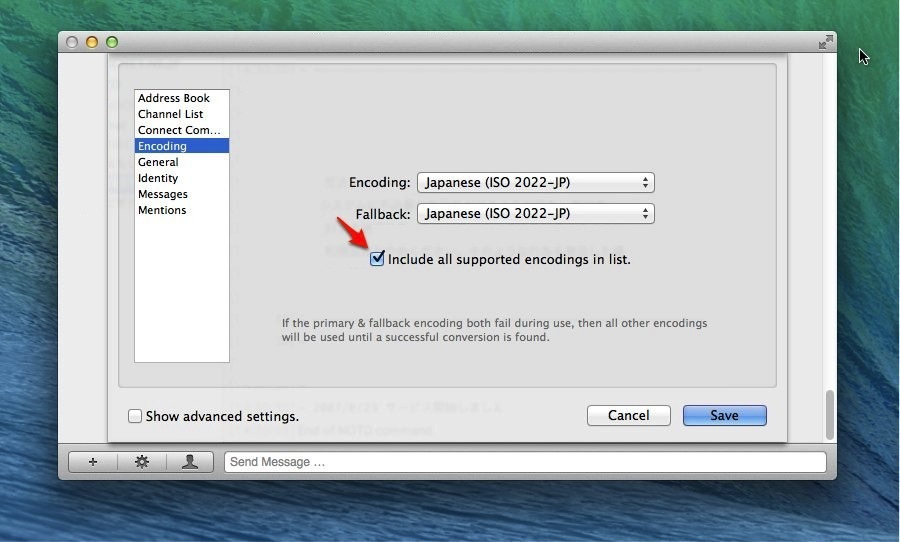Textual Irc Download For Mac

Introduction to Textual
Textual is an application for interacting with Internet Relay Chat (IRC) on OS X. Much of the app uses the open standard of WebKit which makes customization easy through the use of CSS 3 and HTML 5. Plugins written in Objective-C and scripts made with AppleScript (and other languages) are also supported.
Download Textual 7 for macOS 10.9 or later and enjoy it on your Mac. Textual has since evolved and matured into the top IRC client for OS X;.
Forked from the project LimeChat in 2010, Textual has since evolved into one of the most popular applications for interacting with IRC on OS X.
Supporting Textual
Those wishing to support Textual can buy a copy of it on the Mac App Store or directly through FastSpring for 4.99 USD (plus applicable sales tax).
Please do not abuse the power to build Textual in order to freely distribute it to hundreds of users. The copy of Textual in the Mac App Store helps fund the project. Therefore, what is asked, is asked out of respect so that the project can continue to thrive.
Note Regarding Support
Please be aware that while it is within your right to compile Textual, we will not provide support for the building process as it encourages use of potentially unstable code. If you do succeed in building Textual, then you will not be turned away when asking for support using the application itself.
Note Regarding Downloading Textual
Textual is dependent on several other projects to build. This repository is automatically linked against these other projects using what are known as 'submodules' — Clicking the 'Download ZIP' button to build a copy of Textual will not download a copy of these projects that Textual depends on. Therefore, to properly build Textual, Textual must be cloned using Github for Mac or by using the following commands in Terminal:
Failing to follow these steps will result in several 'file not found' errors resulting in the inability for Textual to successfully build.
Note Regarding Code Signing
It is HIGHLY DISCOURAGED to turn off code signing. Certain features rely on the fact that Textual is properly signed and is within a sandboxed environment.
TEXTUAL DOES NOT REQUIRE A CERTIFICATE ISSUED BY APPLE TO BUILD which means there is absolutely no reason to turn code signing off.
Building Textual
The latest version of Textual requires two things to be built. One is a valid (does not need to be issued by Apple) code signing certificate. The second is an installation of Xcode 6.1 or newer on OS X Yosemite. Building on OS X Mavericks and earlier is not possible.

If you are an Apple registered developer, then obtaining a signing certificate is not very difficult. However, if you are not, a self-signed certificate for 'code signing' will work fine. The steps to produce one of these self-signed certificates is very simple to find using Google.
Once you have your code signing certificate, do not modify the Build Settings of Textual through Xcode. Instead, modify the file at the path: Resources ➜ Build Configurations ➜ Code Signing Identity.xcconfig — The contents of this file define the name of the certificate which will be used for code signing.
After defining your code signing certificate, build Textual using the 'Standard Release' build scheme.
When you build Textual for the first time, a framework that Textual that is dependent on (Encryption Kit) will download several open source libraries (libgpg-error, libgcrypt, and libotr) from the Internet which means if you do not have an active Internet connection, these files will not download and the build will fail.
The build process can take up to a minute or more to complete because in addition to building Textual itself, Xcode has to build these open source libraries as well.
If the build succeeds and it typically will, then the final product can be found in the Build Results folder located at the root path of the project.
Original Limechat License
The source code of Limechat did not fall under its current GPL license at the time that the source code was forked in 2010. Its original license, at the time of the fork, is displayed below:
License for content originating from Textual
Textual has indirectly incorporated work from several open source projects. Acknowledgement of these can be found in the respective files that were contributed including licensing information for distribution.
Dvt-jb licsrv.darwin.amd64 license server for mac office. Work that originated from the authors of Textual and were not contributed by other open source projects or from Limechat itself fall under the following license:
Guides > Mac OS X > Compiling Textual IRC Client With Xcode
|